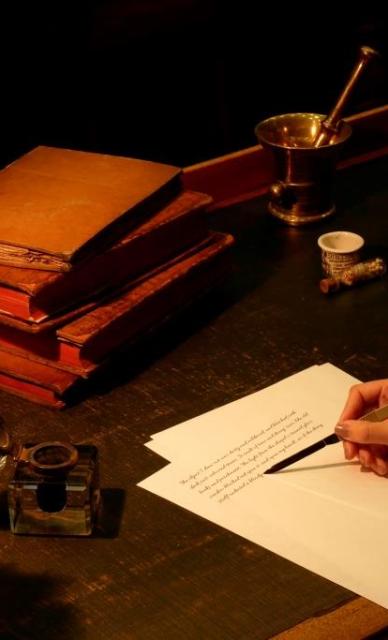Physicians' Gallery Newsletter
Updates on upcoming events, exhibitions and online stories
Empowering medical excellence, shaping healthcare futures.
This month we have received a donation of an exciting collection to the archive: the notes of Dr. D. B. Cater, Head Officer for the Public Health Organisation at Lunghua Civilian Assembly Centre, an internment camp for American and Canadian prisoners of war during World War Two. The two notebooks, detailing day-to-day administration and monitoring of the infrastructure of the camp as it relates to the health of its inhabitants provides a fascinating insight into the conditions of those kept at the camp.
Lunghua camp has already been made famous by another former prisoner: J G Ballard’s novel ‘Empire of the Sun’ is a semi-autobiographical account of his memories at the internment camp, and it was later adopted into a film by Steven Spielberg. There is much to be learned from the records kept for over two years of imprisonment: what might we see of Ballard’s memories in these notes, and how did the experiences of Dr. Cater differ? Of course, this is only a snapshot of his professional life at the camp: Cater is also known to have run a medical class which inspired some pupils to enter the medical profession at Lunghua Polytechnic.1 There is no reference to this in these notes, as they are only concerned with his responsibilities within the Public Health Organisation.
The first of the two notebooks we have received contains a record of the day to day running as overseen by Dr. Cater. The Public Health Organisation encompassed far more than dealing with sick patients: there are notes and reports regarding the state of the laundry area; the building and infection of drainage systems; food supply and conditions at the school. Dr. Cater oversaw the labour efforts to maintain health within the internment camp. The second notebook contains detailed plans, diagrams and sketches of various areas within the camp, noting their conditions and construction. Rice paddies are also detailed, including whether they have been flooded or harvested: a crucial factor in ensuring the continued health of prisoners interned at the camp.
Whilst cataloguing the collection we were able to learn a great deal about the effects of internal and external variables on the health of prisoners. Cater details frequent infections of ‘larvae’ and mosquitos in the water tanks, which render the water unusable. Water supply and drainage was a constant problem; Dr. Cater frequently includes reports from W O Barrington, and later G Sinclair about the efforts to produce clean water and clear sewage. This could be helped or hindered by the Japanese soldiers who oversaw the camp: Sinclair references restrictions on access to the tool store in September 1944, as well as the curtailment of the water supply.
The most dangerous and reoccurring issue at the Lunghua camp seems to have been malaria and typhoid. Bugs are frequently mentioned as an issue, found in water tanks, food supply and as a living threat of malaria. A medical report inserted into the notes of Dr. Cater written by A F Bryson for August 1944 details malaria as the most significant problem, and alleges ‘food deficiencies’ as being responsible for slower recovery from illness. Two deaths are accounted for during the month: one of old age, and one due to the effects of malaria and bacillary dysentery. Thanks to these records we can see yet another perspective of the lives of western civilians in internment camps during the Second World War: it is clear that those who were imprisoned made a great effort to maintain structure, a sense of community, and health amongst their peers.
1 Archer, Bernice, The Internment of Western Civilians Under the Japanese, 1941-45. 2004. Psychology Press.
Author: Raleigh Twigge, volunteer.

Updates on upcoming events, exhibitions and online stories